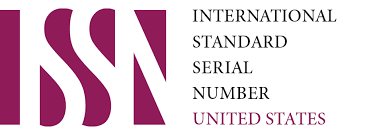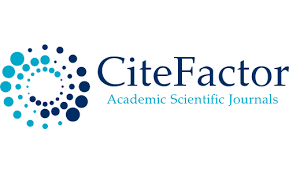Environmental sensing and its role in achieving strategic agility Analytical descriptive research in the Iraqi South Oil Company
Keywords:
Environmental sensing, strategic agility, the South Oil Company / IraqAbstract
The purpose of the research is to measure the role of environmental sensing processes in achieving strategic lightness, based on the descriptive-analytical approach, as the intellectual and philosophical framework for this research was formed through the interaction of two variables (environmental sensing, strategic lightness), and to understand and clarify this framework, the essential dimensions of sensing were adopted. The environment is represented by survey, monitoring, forecasting, evaluation. As for the dimensions of strategic lightness, it was embodied in strategic sensitivity, strategic response, and strategic capabilities. A sample of (82) employees of the South Oil Company was surveyed, and this research sought to answer several questions from During the presentation of the theoretical philosophy and the intellectual implications of these variables, this is in addition to what was reached through the field side of the research in which it was relied on to design a questionnaire form whose paragraphs fit with the nature of the research environment, which was represented in a sample of the workers of the South Oil Company, and the research came out with several conclusions In the light of which several recommendations were raised for the research sample company, and one of the most important conclusions reached by this research is that environmental sensing has an active role No, and a significant impact on achieving the company's strategic agility
References
Salman, Fatma Abdul Ali and Al-Shammari, Muhammad Awad Jarallah and Al-Shamry, Ahmed Abdullah Amanah, (2021) “The Impact of Environmental Sensing Operations in Enhancing Strategic Success Indicators” Journal of Management and Economics, Vol. 10, No. 37.
Thompson, John, L., (1997) Strategic Management: Awareness and Change 3nd ed., Hall pub., The United States of America.
Jackson, John Haze, Cyril L. Morgano Joseph J. And Badilo (1988), "Organization Theory: A Holistic Perspective to Management", translated by Khaled Hassan Marzouk, Saudi Arabia Library.
Munqith Muhammad Dagher, and Adel Harhoush Salih (2000) “The Theory of Organization and Organizational Behavior” Dar Al-Kutub for Printing, Baghdad, Iraq.
Hussein, Harem (2003) Organizations Management", first edition, Dar Al-Hamid for Publishing and Distribution, Amman, Jordan.
Narayanan Veeay., & Nath Rachu .,(1993) "Organization Theory": A Strategic Approach, Irwin McGraw-Hill book Co, United States of America 1993.
Hitt, Michael., Ireland, R& Hoskisson, R,(2001) Strategic Management Competitiveness and Globalization, Southwestern College Pub., United Kingdom,
Hustad , Eli, & Aurilla Aurelie Bechina. (2012), "Exploring the Role of Boundary Spanning in Distributed Networks of Knowledge." Electronic Journal of Knowledge Management 10.2, p.10.
Ofstein, Laurel F. (2013), " Boundary Spanning in the Entrepreneurial Firm: Effects on Innovation and Firm Performance". Doctor Dissertation, Diss. DePaul University.
Levina, N., and Vaast, E. (2005), "The emergence of boundary spanning competence in practice: implications for implementation and use of information systems," MIS Quarterly (29:2).
Dess, Gregory G.; Lumpkin, G.T. & Eisner, Alan B., (2005)" Strategic Management: Text and Cases " 2nd Edition, McGraw- Hill, New York,
Raghu, T.S., & Vinze, A.(2005) “A business process context for Knowledge Management” Decision Support Systems,
Hodge, Billy J; William P. Anthony & Lawrene M. Gales, (2003), “Organization Theory: A Strategic Approach”, 6th ed, Person Education, Inc., New Jersey, U.S.A.
Aitken, James; Christopher, Martin & Towill, Denis, (2002)," Understanding, Implementing and Exploiting Agility and Leanness", International Journal of Logistics Research & Application, Vol 5. No. 1, 59-74.
Katayama, Hiroshi. & Bennett, David, (1999), "Agility, adaptability, and leanness: A comparison of concepts and a study of practice", Int. J. Production Economics, Vol. 60-61, 59-74.
Oyedijo, Ade, (2012), "Strategic Agility and Competitive Performance in the Nigerian Telecommunication Industry: An Empirical Investigation", American International Journal of Contemporary Research, Vol. 2, No. 3.
Khoshnood, Nikoo Tabe & Nematizadeh, Sina, (2017), " Strategic Agility and Its Impact on the Competitive Capabilities in Iranian Private Banks", International Journal of Business and Management, Vol. 12, No. 2.
Sethi, Mukesh Chander A/L Kidarnath, (2004), " Factors influencing Agility in Supply chain management -A preliminary investigation in the electronics industry of Northern Malaysia. "Doctor Dissertation of Business Administration(Unpublished), International Graduate School of Management Division of Business and Enterprise, University of South Australia.
Young Alethea G, (2013)," Identifying the impact of leadership practices of Organizational Agility", Master Thesis in Science of Organization Development(Unpublished), The George L. Graziadio School of Business and Management, Pepperdine University, United States.
Wendler, Roy, (2013), "Informatyka Ekonomiczna Business Informatics ",1th Edition, House of Wroclaw University of Economics, Germany.
Najrani, Majed (2016)," The Effect of Change Capability, Learning Capability and Shared Leadership on Organizational Agility", Doctor Dissertation of Education in Organizational Leadership(Unpublished), Pepperdine University.
Audran, Arthur, (2011), Strategic Agility: A Winning Phenotype in Turbulent Environments, Master Thesis in Science of Management, Economics and Industrial Engineering( Unpublished), Politecnico Di Milano.
Teoh, A. P.; Lee, K.Y.& Muthuveloo, R.,(2017), " The Impact of Enterprise Risk Management, Strategic Agility, and Quality of Internal Audit Function on Firm Performance", International Review of Management and Marketing, Vol. 7, No. 1, 222-229.
Beh, Kok, Khim, (2007)," Strategic Agility in The Semiconductor Industry in Malaysia & Singapore", Doctor Dissertation of Philosophy in the Faculty of Humanities (Unpublished), The University of Manchester of Business School.
Overby, E., Bharadwaj, A., Sambamurthy, V., (2005)," A framework for enterprise agility and the enabling role of digital options", IFIP International Federation for Information Processing, vol. 180. Springer, pp. 295–312
Tallon, P. P. & Pinsonneault, A.,(2011)," Competing Perspectives on the Link between Strategic Information Technology Alignment and Organizational Agility: Insights from a Mediation Model", MIS Quarterly, Vol.35, No.2, 463-486.
Bouwman, Harry ; Heikkilä, Jukka ; Heikkilä, Marikka; Leopold, Carlo & Haaker, Timber, (2017), " Achieving agility using business model stress testing ", cross mark, Springerlink.com.
Allwein, Florian, (2017), "The role of digital infrastructures in performances of organizational agility", Doctor Thesis of Philosophy in Management ( Unpublished), The London School of Economics and Political Science.
Doz, Y. & Kosounen, M., (2008a), "Fast Strategy", Wharton Scholl, Publishing, Harlow.
Mace, Richard, (2016), " Business Model Innovation, Business Model Enablers, and The Strategic Agility Paradox, Doctor Dissertation of Business Administration(Unpublished), Capella University.
Santala, Maarit, (2009), Strategic Agility in a Small Knowledge-Intensive Business Services Company: Case Swot Consulting", Master Thesis in Organization and Management(Unpublished), Department of Marketing and Management, Kelsingin Kauppakorkeakoulu, Helsinki school of economics, Espoo, Finland.
Mavengere, Nicholas Blessing,(2013b), "Information technology role in supply chain’s strategic agility", Int. J. Agile Systems and Management, Vol. 6, No.1.
Vecchiato, Riccardo,(2014), " Creating value through foresight: First-mover advantages and strategic agility", Technological Forecasting & Social.
Tautermann, S. W.& Weichert,S. (2015)," Impact of External Situational Factors on the Agility of Humanitarian Supply Chains: A Case Study of Haiti Earthquake", Master Thesis in Business Administration(Unpublished), Jönköping University, Sweden.
Ivory, Sarah Birrel & Brooks, Simon Bentley,(2017), " Managing Corporate Sustainability with a Paradoxical Lens: Lessons from Strategic Agility", J Bus Ethics (Spring 2017).
Pesonen, Julius,(2010), "Strategy Agility in Production Networks", Master Thesis in Science(Unpublished), Tampere University of Technology.
Downloads
Published
Issue
Section
License

This work is licensed under a Creative Commons Attribution-NonCommercial 4.0 International License.
User Rights
Under the Creative Commons Attribution-NonCommercial 4.0 International (CC-BY-NC), the author (s) and users are free to share (copy, distribute and transmit the contribution).
Rights of Authors
Authors retain the following rights:
1. Copyright and other proprietary rights relating to the article, such as patent rights,
2. the right to use the substance of the article in future works, including lectures and books,
3. the right to reproduce the article for own purposes, provided the copies are not offered for sale,
4. the right to self-archive the article.













